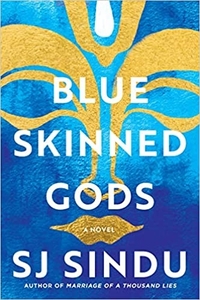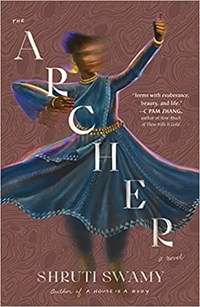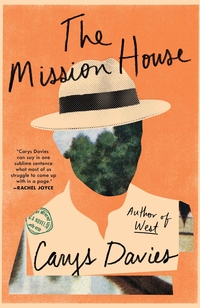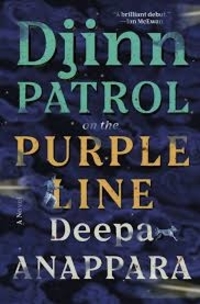The Earthspinner by Anuradha Roy
 Monday, June 27, 2022 at 6:58AM
Monday, June 27, 2022 at 6:58AM 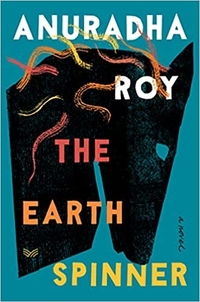
First published in the UK in 2021; published by HarperVia on July 5, 2022
The Earthspinner is in part a story of forbidden love. More fundamentally, it is a story of creative obsession and prejudice against art that crosses implied boundaries. Elango is a potter, carrying on the tradition of his caste. To make ends meet, he also drives an autorickshaw. His favorite passenger is Zohra, a girl who walks with a limp. Elango falls in love with Zohra but “they belong to tribes that hated each other and he knew they could never be together.” Elango “could not utter what she was, a Muslim. The space between the two was a charnel house of burnt and bloodied human flesh, a giant crack through the earth that was like an open mouth waiting to swallow him.”
Elango dreams of an earthen horse and comes to believe that if he shapes the horse from clay, Zohra will be his. The novel follows Elango as he devotes his free time to creating the horse of his dreams. Zohra’s grandfather, a blind calligrapher, carves into the horse a beautiful poem about riding the freedom of imagination. But Anuradha Roy wants the reader to understand that freedom in India only lives in the imagination. Elango is not free to marry Zohra. Nor is he free to express himself with a horse that does not suit the arbiters of his religion.
Elango’s grandfather once made horses for temples. People who see the horse believe a temple is where it belongs. They do not realize that the poem decorating the horse is written in Urdu, “the language of mullahs,” a desecration of a temple horse — at least in the view of Hindu temple priests.
Elango’s story is narrated by Sara, whose mother is a journalist. As a young girl, Sara learned the craft of pottery from Elango — to the chagrin of neighbors who thought she had no business learning such things.
The story begins and ends in the present. Five years have passed since Elango’s story ended. Everything has changed; the villagers have made new lives; the village has melted into the earth, taking with it the memories of the horrific event that is the novel’s defining moment. Sara remembers her father telling her that “change was the work of the earth spinning, spinning as it always had.”
Sara is studying English literature in England and making pots to relieve her stress. She notes the difference between rural India, where neighbors are nosy, and England, where “curiosity is bad manners.” One of Sara’s friends is experiencing, like Elango, a form of love that is forbidden by her culture.
The collegiate Sara catches up with Elango and becomes an audience to whom he can unburden himself, “a girl who shared his language as well as momentous bits of his past.” She decides to tell his story. Sara emphasizes how he has changed, how life has taken him on an unexpected path. She also assesses how she has changed, solidifying change as one of the novel’s themes, embodied in Sara’s understanding that the cosmos is “hell-bent on doing things we can neither anticipate nor prevent.”
A dog is central to the story, adding further evidence to my conviction that every work of fiction is improved by the addition of a dog. The dog is lost when its owners suffer a carjacking. Elango adopts the dog and it becomes beloved by the village. The dog creates tension for a character who knows that its former owners are searching for him, but the character is convinced that the dog is happy and should not be uprooted again. Uprooting and rebirth are among the novel’s themes. Sara explains that where she comes from, “we have always known that ordinary days can explode without warning, leaving us broken, collecting the scattered pieces of our lives, no clear idea how to start again.”
Religious fanaticism is the story’s darkest theme. Yet Roy makes clear that religion is not necessarily to blame for the fanatics that turn religion into a vehicle for hate. Sara’s father helps her realize that the war between Hindu and Muslim is not about religion at all, but it more like the blood feud that underlies Romeo and Juliet. The story’s most hopeful theme is the possibility of repair and restoration, of fixing what’s broken or learning that we don’t need the broken thing after all.
The Earthspinner might be viewed as an allegory of the teacher and student. It might be viewed as a love story or the story of a young woman’s unrequited (and perhaps unrecognized) love. It might be viewed as an indictment of prejudice in India and the larger world. It might be viewed as a commentary on the challenges and costs of artistic creation. It might be viewed as a reflection on tests of character, how we pass or fail them or fail to recognize them. The Earthspinner is a deceptively simple novel that works on many levels, giving the reader a trove of possibilities to unpack. Like all of Roy’s work, The Earthspinner is worthy of a careful unpacking.
RECOMMENDED
 TChris |
TChris |  Post a Comment |
Post a Comment |  Anuradha Roy,
Anuradha Roy,  India in
India in  General Fiction
General Fiction 